Sensory processing is a complex system that involves receiving the sensory information successfully from all the senses such as sight, smell, hear, taste, balance etc, interpreting that sensory information correctly, combining this information from different senses to create a complete picture, deciding on response based on the information form all the resources and carrying out the appropriate response.
For more information on sensory integration, do take a look at our blog https://www.playstreet.in/2021/11/04/sensory-integration/
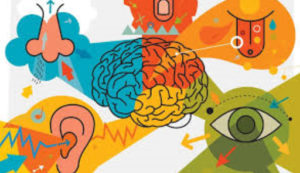
A child who has difficulty receiving and interpreting sensory input can have difficulties with
- Communication and social interaction – Children who experience difficulty integrating a world full of sensations will have difficulty learning how to communicate. Without adequate processing and internal sensory cues, children with sensory integration dysfunction or sensory processing disorder (SPD) lag behind in their early communication attempts like responding to name call, following commands, responding to the communicative partner, etc. This leads to difficulty or inability to understand language and express themselves verbally or non-verbally.
- Initiation and maintaining peer relationships – As communication keeps getting disrupted, because of their sensory processing difficulties, it is difficult for both individuals to have a smooth interaction which leads to difficulty in making friends or relating to another individual.
- Daily routines and activities – In a study done by Ben- Sasson, Carter, Briggs-Gowen, 2009, it was found that 1 in every 6 children experienced differences in sensory processing that could significantly affect different aspects of everyday life functions. Simple everyday tasks such as self-care, grooming, and play can look daunting and overwhelming.
- Academics – SPD can contribute to learning disabilities inhibiting them to acquire skills required for reading and writing efficiently. Information from both auditory and visual modalities are not processed properly which lead to children avoiding activities that involve closed visual work, and careful listening tasks. If the child has poor motor planning, low muscle tone, vestibular, and proprioceptive senses, this could make writing skills difficult.
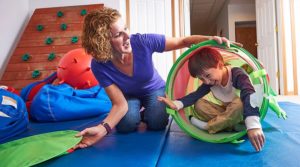
It is important for us to understand what sensory integration is and how it helps with everyday life of a child, especially the child’s feeding and communication skills.
In this blog we will cover three important sensory systems.
Tactile System
- Tactile receptors are present on the skin and also inside the mouth.
- If the child is defensive, the child can have challenges related to eating.
- If the child is seeking, the child may be mouthing objects, putting his/her hands in the mouth.
- If the child doesn’t receive appropriate sensory and motor feedback from the articulators in the mouth, child can have issues in speech clarity.
Proprioceptive System
- Proprioception, simply put, is the body awareness or the pressure that individuals feel on their joints. For instance, being able to walk or kick without looking at your feet or being able touch your nose with your eyes closed
- It is required for complex tasks such as gesturing, pointing and writing are all done without constant visual monitoring of extremities.
- Oral motor difficulties or poor awareness of structures in the mouth can impact both feeding and speech. Children may not know where to place articulators like the tongue and the lips to form sounds or move their tongue around while eating.
- A child craving proprioceptive input through the jaw will always have something in his/ her mouth or clench their jaw. This proprioceptive input is very calming for children. They also tend to overstuff their mouth, grind their teeth, or mouth objects. They do this to calm down in overwhelming situations.
Vestibular System
- The vestibular system and the auditory systems work together to process movement and sound.
- This is tied to speech-language development; it also influences motor control and motor planning that are needed to process fine muscles required for intelligible speech.
- Children can be easily distracted, can have difficulty locating sounds, poor reading and articulation and many more difficulties.

How can professionals and parents work with children who have sensory difficulties and incorporate play-based movement and sensory activities into speech and language therapy?
- Regulating a child’s sensory need is the first step before focusing on feeding, speech and language skills. Our main goal is to increase a child’s engagement, participation and independence.
- Use visual supports and schedules to help the child understand what is expected and what is going to happen.
- Using a multi-sensory approach is very important. Using visual, verbal and tactile cues in combination makes it easier for the child to understand.
- Know the child’s interests and use that to help increase attention, focus, and learning.
- Keep requests and questions simple and to the point.
- Speak slowly and clearly.
- Understand and accept stimming behaviours that helps the child regulate their nervous systems.
Activities that can be incorporated include:
- Jumping jacks, stretching activities, mouldable sand, play dough, sensory bins of various textures, touch and feel books, hiding objects and pictures in sensory bins, swings in different positions, bean bags. These activities can also be used during sensory breaks.
- Language stimulation can be incorporated during this play-based movement such as running, climbing, sliding, jumping to support their language development in terms of vocabulary (up, down, more, again, colours, numbers, etc), understanding skills, and social communication skills. Some of the ways include:
- Obstacle courses – these naturally promote speech and language skills. Obstacle courses require children to navigate by going in, out, under, over, on, off, through, next to, to the right/left of, up, down, etc. Also, we can work on Wh- questions, opposites etc. The simple act of going through the course can help promote following directions and basic concept knowledge. Setting up activities within the course that must be completed before moving on to the next obstacle.
- Using sensory play with playdough, sand, water beads can also be used for:-
- Vocabulary Expansion: Playing with a bin or bottle is the perfect opportunity to bring some new descriptive words into their vocabulary. Use your own words to describe what they’re playing with and have them do the same. (ex. squishy, sweet, soft, shiny, opaque, scratchy)
- Sentence Fluency: Encourage the child to communicate with you about what they are doing – or want to do – in full sentences rather than brief phrases. (ex. If you ask what they are playing with and they say, “play dough,” you can respond with, “You are playing with the play dough.” Then, comment to promote longer responses, such as “I wonder what we can do with the dough”)
- Question Comprehension: Ask a mix of open-ended and yes/no questions to improve comprehension and response. (ex. “How does it feel in your hand?” or “Do you want to shake the bottle?”)
- Following Directions: Work on giving commands that require the child to identify the objects and follow directions. As they get better with it, you can give more complex commands with multiple steps. (ex. “Let’s pick up the play dough and stretch it!” or “Let’s pour the water into the sand!”)
- Inferencing: Ask them to make observations and draw conclusions based on what they see. (ex. “I wonder which of these tools we can use to stir…” or “Let’s think about what happens when we mix the red and white paint!”)
- Pretend Play: Sensory play makes for great pretend play – there are no rules or expectations for playing with things like water beads! Have fun with expressive language skills by encouraging imagination. (ex. Join in the play and comment about the play, assign names and personalities to the toys they are playing with)
- Self-Regulation:Sensory play is a good way to calm an anxious or frustrated child. They also are great opportunities to learn about self-control. A child must follow the rules – no eating the shaving cream, no throwing the rice, taking turns, sharing. These rules are set in place to keep us safe but are also teaching a child how to have self-control.
- Being Flexible: Sensory play provides a great opportunity to open kids up to new experiences and become more flexible.
- Problem-Solving: Many wonderful problem-solving opportunities arise in sensory play. Wait for the child to ask for help or ask a question. Watch them discover new textures or items and how they work and interact together. Many language opportunities come with problem-solving and inferencing skills!
- Sensory diets also play a very important role.
- Environmental modifications such as reducing distractions, seating options etc should also be taken into consideration.
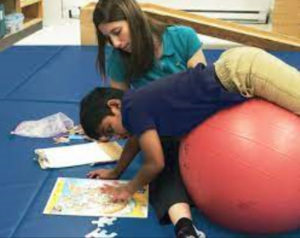
References
- https://ksha.org/docs/SLP11_15_21_25_Sensory_for_the_SLP.pdf
- Cermak, S. A., Mauro, T. (2006). The Everything Parent’s Guide To Sensory Integration Disorder: Get the Right Diagnosis, Understand Treatments, And Advocate for Your Child. United States: Adams Media.
- https://www.autismparentingmagazine.com/autism-sensory-processing-disorder/
- https://www.dropbox.com/s/w4rghpowulvsvtu/Parent%20Handbook_2022.pdf?dl=0
- Hall, C., Alves, K., Maich, K., Penney, S. C. (2020). Autism Spectrum Disorder in the Canadian Context: An Introduction. Canada: Canadian Scholars.
- https://www.spdstar.org/sites/default/files/file-attachments/Sensory_Over-Responsivity_in_Elementary_School_Prevalence_and_Social_Emotional_Correlates_2009.pdf
- https://allisonfors.com/sensory-play-speech-therapy/
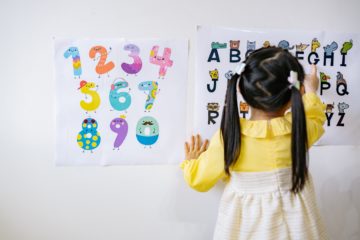

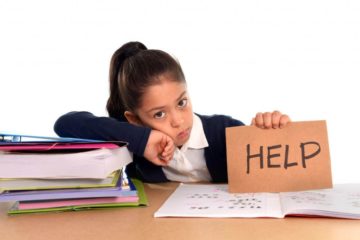
0 Comments